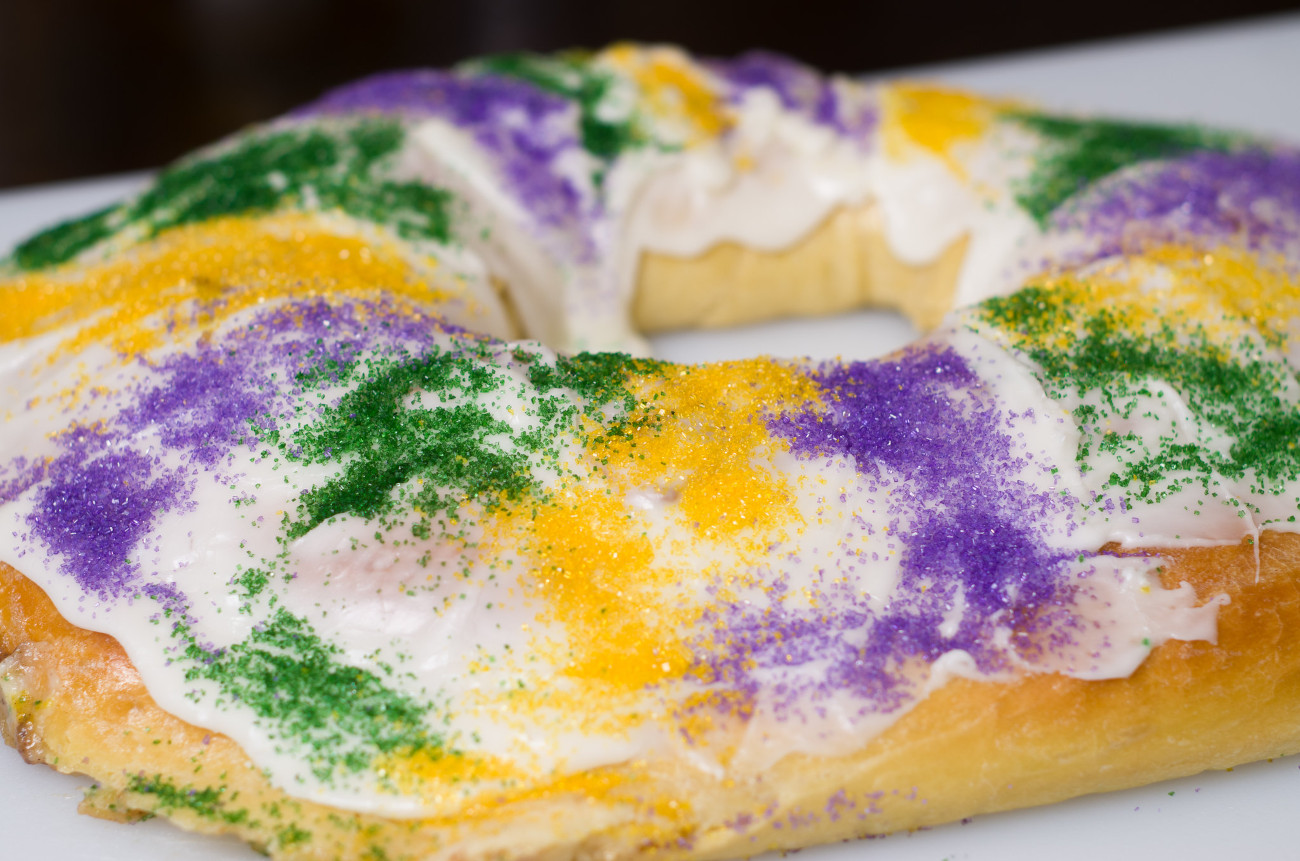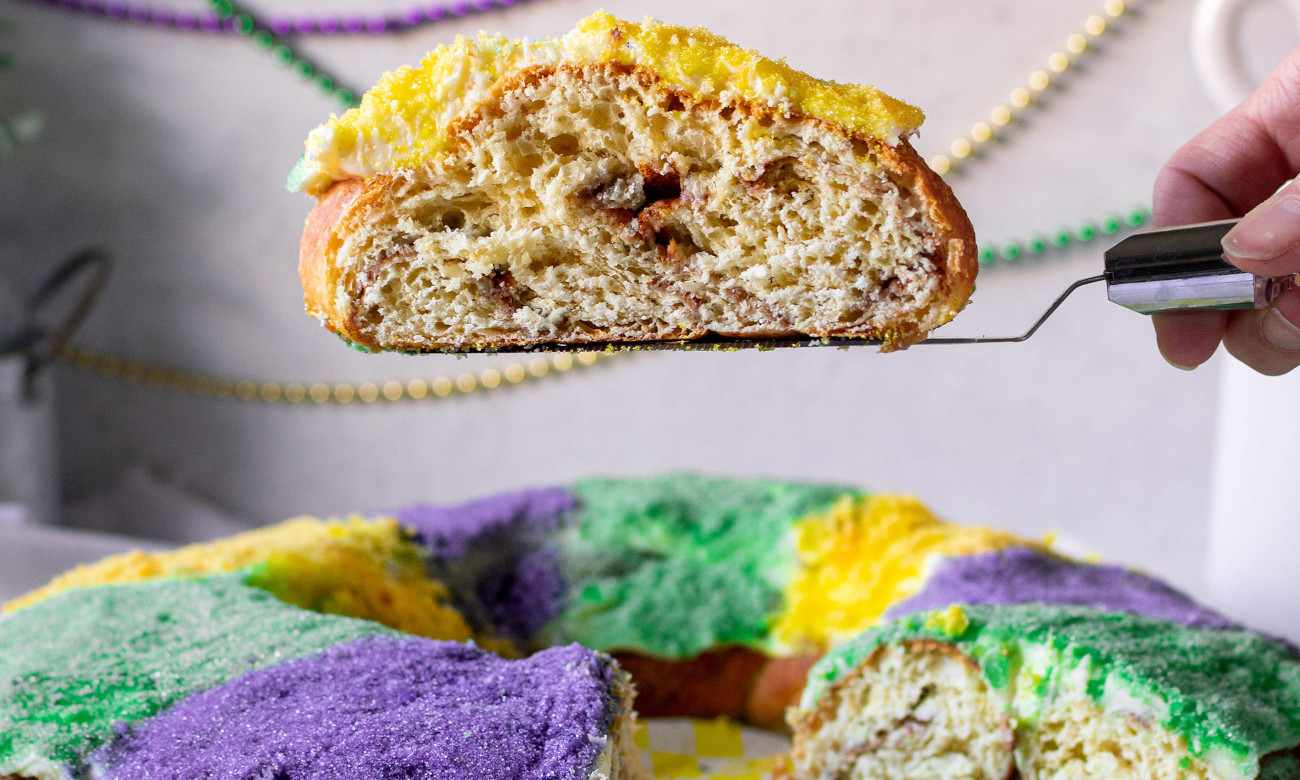We hear of it in a passing news segment or see some specialty foods in the store, but for those living near or around New Orleans, the build-up to Mardi Gras lasts longer than Christmastime. The ubiquitous images of colorful king cakes are well known but not understood. What is the meaning of king cake, and why decorate it with purple, green, and gold?

It’s not just the Big Easy that chows down on a slice of king cake. Come January 6th, Catholics celebrate Epiphany (also called the Twelfth Night), commemorating the three kings who arrived to deliver gifts to Christ. With French influence (where king cake was baked in the Middle Ages), it’s easy to see how the culinary tradition spread to the New World.

Unlike Epiphany — where king cake is a one-day eaten treat — during New Orleans’ carnival season, you’ll encounter the king cake on more than one occasion. This means if you get the baby in your slice of cake, you have to bring a king cake to the next party (NOT next year) — talk about eating a lot of dessert! Between January 6th and Fat Tuesday in February, most are eating to their heart’s content at gatherings, balls, and street festivals. Yet Epiphany cake (Rosca de Reyes in other countries) is adorned with a simple plain white glaze. So when did the colors come into play?

Well, there’s no direct nor easy answer to this, and the mystery is left up to assumption and searching. There is a fabled story where a Romanov noble visiting NoLa in 1872, was honored by the city which adorned the balconies and paraded around with these three colors. But with little backup to solidify this story, local New Orleans historian Errol Flynn Laborde looked to find a more viable answer to the colors of Mardi Gras and king cake. There were no direct answers, and the theory Laborde and his team came up with seemed like a viable hypothesis.

Carnival season, having a king commencing the celebrations at balls and parades, needed to distinguish the time with a flag. During the 19th century, many new nations took up tricolor schemes (like France and the U.S.), and the assemblage of those three symbolized a unity of sorts. Following the rules of heraldry and coats of arms, there had to be a balance of earth, metal, and nonmetal colors.
While the traditional meanings of the colors — purple being justice, gold being power, and green faith — are quick, surefire answers, there is also a deeper meaning and one that better matches the excess of the Mardi Gras holiday. Gold symbolizes the richest of metals, while purple is the nonmetal color and stands for the most luxurious of dyes worn only by the elite. Finally, green represents the earth element with fertility, growth, and luck. Together this trio gives off the deepest and richest of colors to show off the best of prospects for those wearing or eating those colors.
So to eat a rich cake with the richest of colors that should — in Mardi Gras theory — give you the best of prospects for the year!
Do you celebrate Mardi Gras with king cake or wear purple, green, or gold for that holiday?













